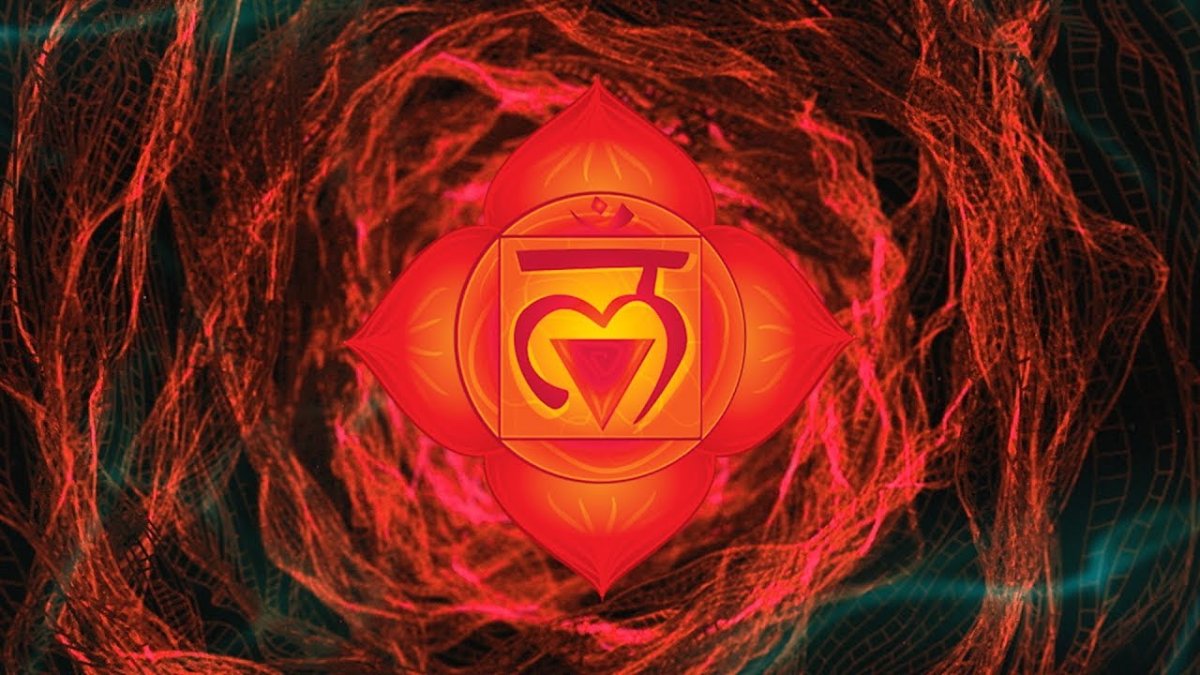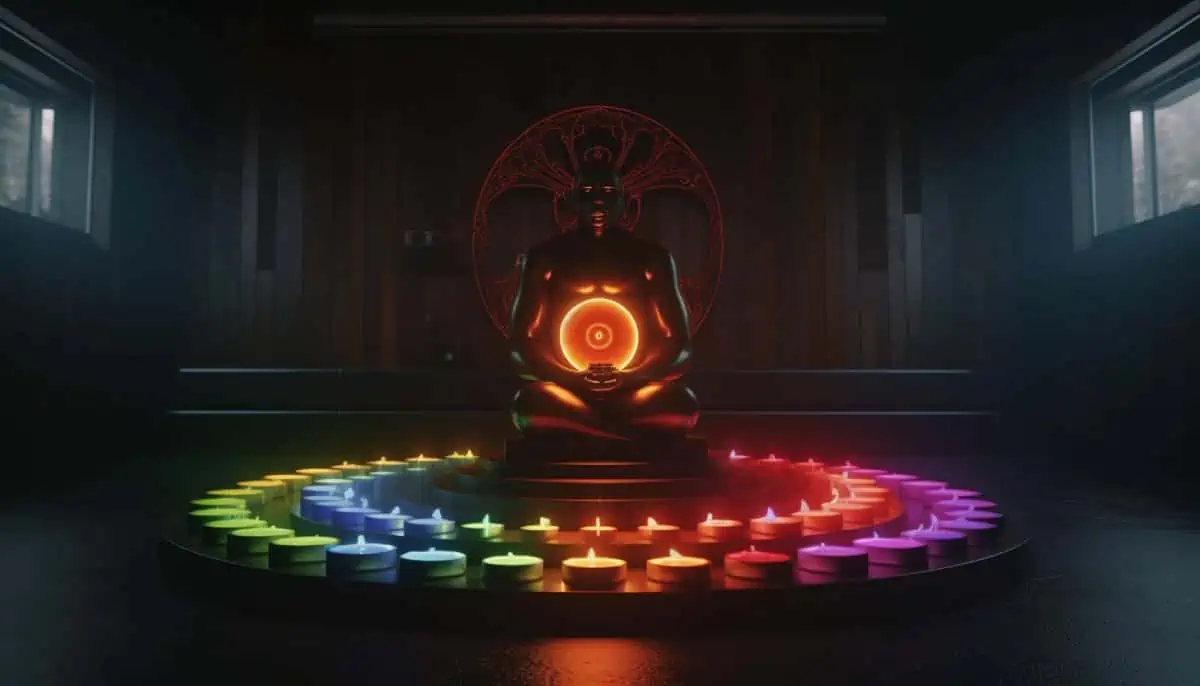The chakra system encompasses seven focal points of energy within the subtle body. Visualize these vital energy centers as gears that constantly move your subtle energy upward and downward.
The complex chakra system originated in ancient India. These energy centers were first cited in ancient Vedic and Tantric texts, some of the oldest Hindu writings, dating from 1500 to 1000 BC. It’s a vast field of study.
Ready to get grounded? Today, we’ll focus on the first chakra energy center, which rules our sense of safety and security. It’s also known as the root chakra or muladhara chakra.
Contents
The Root Chakra at a Glance
What does muladhara mean?
The Sanskrit word for this energy center, muladhara, translates to “root support.”
Location of the root chakra
The root chakra is situated at the base of the spine, between the anus and the genital organ at the perineum.
Free Cheat Sheet: The 7 Best Ways to Unblock Chakras
Download nowRoot chakra element
The element associated with the root chakra is earth.
Muladhara chakra color
The color of the root chakra is red. Activate this energy center by wearing and/or surrounding yourself with any shade of red, including pink.
Red is a color of vitality, power, confidence and earthiness. The red color wavelength is the slowest of all colors in the spectrum of visible light.
Root chakra symbolism
The root chakra symbol includes a lotus with four petals, a downward-facing triangle within a square, and the seed mantra (LAM लं) symbol in the center.
According to yogic philosophy, four petals of the root chakra lotus symbolize mind, intellect, consciousness and ego.
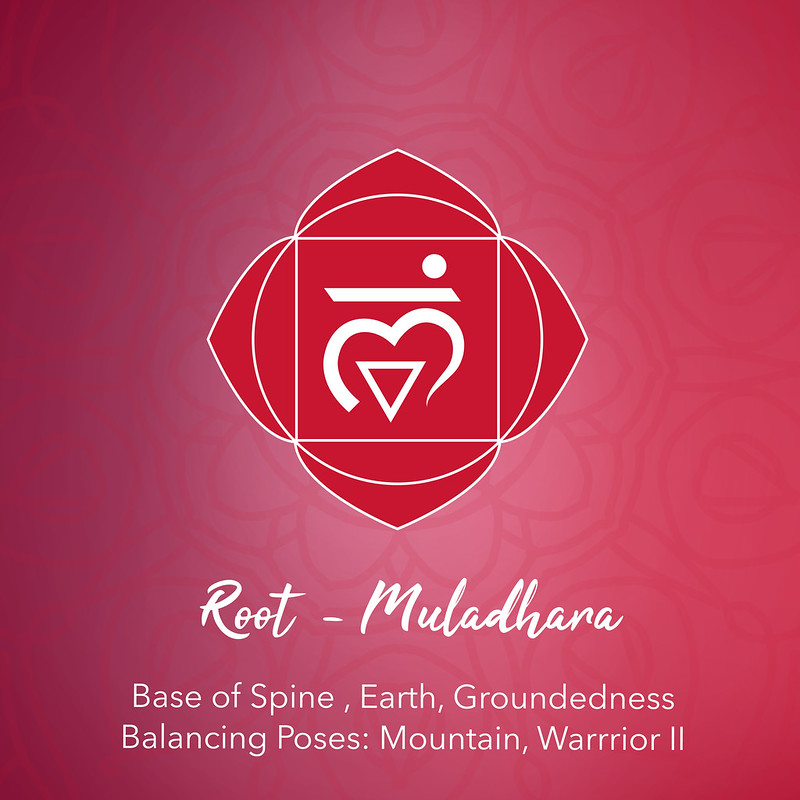
The serpent is also associated with the root chakra. Representing wisdom, power and dormant kundalini energy, the serpent rests within the chakra coiled upon itself three and a half times.
The Science Behind the Chakras
The chakras don’t work in isolation, but rather in coordination—which makes them difficult to isolate for study.
Although there isn’t any hard scientific evidence to back these theories up as of yet, scientists and researchers have developed theories that connect the chakra system to the endocrine system, as well as to various parts of the brain.
For example, the root chakra correlates with the testes or ovaries and with the medulla oblongata.
What Role Does the First Chakra Play in Our Lives?
The root chakra controls the core issues of identity, safety and security, as well as our physical roots and ancestry.
Chakra Test: Discover Your Strongest, and Weakest, Chakras
Take the free testThink of muladhara as the instinctual chakra or the reptilian brain of the chakra system. The root chakra is responsible for activating our fight-or-flight response to triggering situations.
The first chakra is the foundation of our life force energy (“prana” in yogic terminology). The root chakra is the foundational energy for all our emotional and physical states. It is thought to form between birth and age 7.
Akin to the roots of a tree, this chakra is the base of your existence and key to feeling grounded as you move through life. Psychologically, the root chakra helps us to strengthen our essential connection to the Earth and feel grounded and rooted. When we feel secure, our energies flow in a healthy and balanced way.
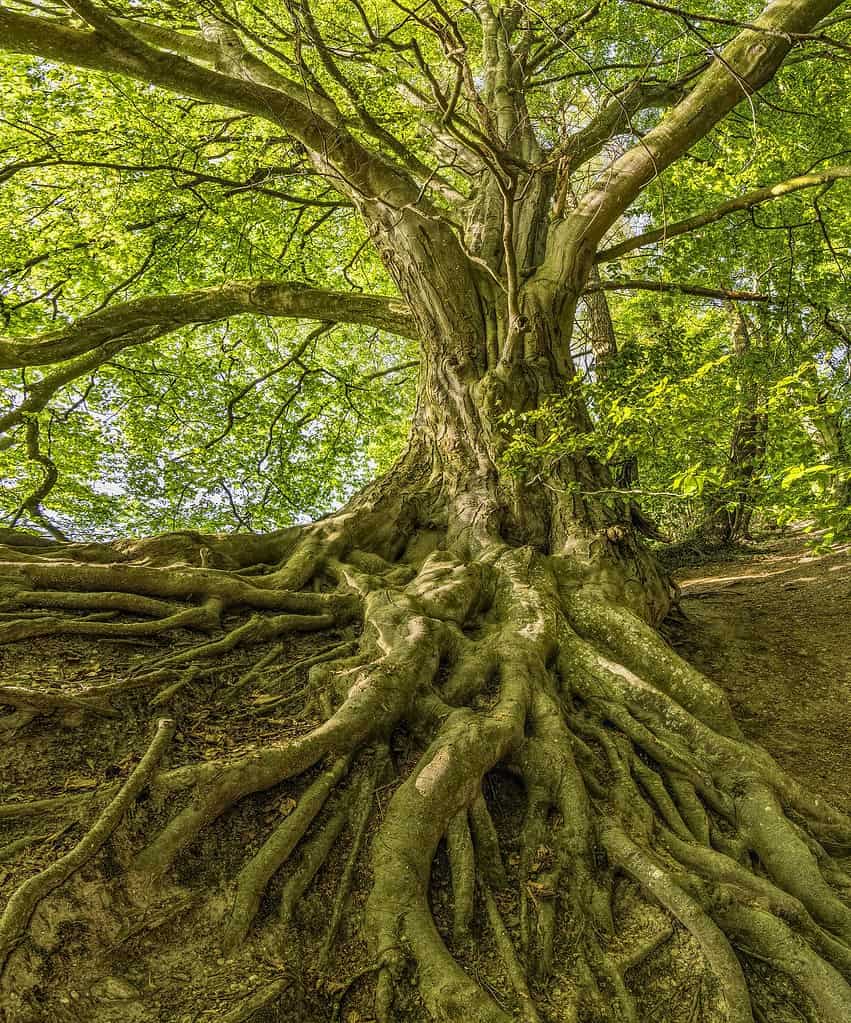
Signs that Your Root Chakra is Blocked or Out of Balance
When we have energetic blocks and imbalances in our system and engage in detrimental habits that block us from accessing our natural vitality, we end up feeling exhausted, scattered, bored or even sick.
As the base of the chakra system, the root chakra is like our physical body’s security guard. When you feel overwhelmed, spaced out or on the verge of a nervous breakdown, that’s your root chakra screaming that it’s seriously out of alignment.
When your energy stagnates at the first chakra, you may feel insecure or paranoid. These feelings are likely to lead to harsh words or actions directed at yourself and others.
Physiological imbalances at this level tend to show up in the colon, bladder, spinal column, lower back, legs and feet. For example, a blocked root chakra may manifest as back pain, arthritis or a bladder infection.
Emotionally, a blocked muladhara may cause financial insecurity, poverty mentality, stress, anxiety and an overall lack of self-confidence. Energetically, it makes you feel lethargic, unproductive, stuck and generally exhausted.
How to Heal, Open and Balance the Root Chakra
Feeling grounded, safe, stable and confident means that your ruby-red root chakra is open and balanced. Implement the following tips and techniques to ground yourself and balance the energy of your root chakra.
Visualize the Muladhara Chakra
Meditation serves as a grounding practice to help you connect to your physical body and the Earth. Try this grounding cord visualization that specifically targets the first energy center.
Visualize a red cord of light like a laser beam extending from your root chakra, down into the crystalline core of the planet. Return to this meditation technique each time the mind wanders. After several minutes, imagine releasing the grounding cord and the light dissolving into the soil.
Beneficial Foods for the Root Chakra
To counteract feeling ungrounded, intentionally eat meals and snacks that root and reconnect you with the earth element.
Munch on root veggies that grow in the ground like beets, carrots, potatoes, and yams, as well as beans, nuts and pumpkin or sesame seeds.
Fresh red-colored produce such as tomatoes, strawberries, raspberries, cherries, red apples, red bell peppers, pomegranates and beets also help nourish the earth element aspect of the root chakra.
Eat these comfort foods extra mindfully and slowly, savoring their delicious density and flavor.
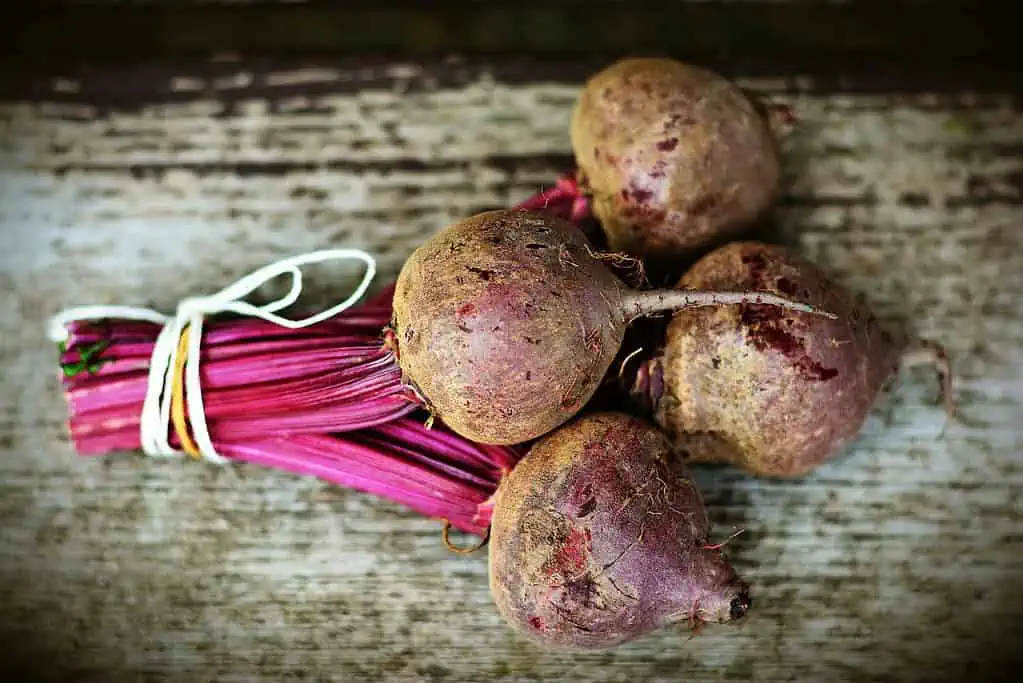
First Chakra Meditation
Connect to your root chakra through your feet. Simply walk barefoot (ideally outdoors) in slow motion, paying close attention to the act of walking. This practice is called earthing.
Cultivate a sense of gratitude for the ability to propel yourself from place to place. Focus on the soles of your feet, noticing how the heel, ball of the foot, and the toes as each part touches the ground.
Breathe deeply. Even just a few minutes of walking meditation in nature calms the nervous system and connects you with Mother Earth.
Muladhara Chakra Affirmations
As part of your daily practice, repeat any of these positive affirmations aimed at root chakra healing that resonate with you:
- I am secure and safe.
- I am here now.
- I am rooted, grounded and stable.
- I am calm, comfortable and content.
- Mother Earth nourishes, protects and supports me.
- I let go of doubts, worries and fears.
- I love and trust my body.
- I belong here.
Root Chakra Yoga Poses
In whatever pose you’re in, notice where your body connects to the earth. If you’re standing, for example, feel the soles of your feet and spread your toes, grounding the feet into the earth. When sitting, feel how the pelvis, legs and feet rest on the floor beneath you.
To stimulate the first chakra, practice yoga poses that stretch and stimulate your feet, ankles, knees and lower back (base of the spine). Try this brief sequence of seven poses to do just that.
1. Mountain pose
Standing tall, feel your feet pressing into the earth. Make your legs and core strong, yet relax your shoulders and face.
2. Forward Fold
Bow the torso down, bending into a forward fold. Bend the knees if needed. Let the arms hang down, holding the elbows. Hold this pose for several breaths, stretching the hamstrings and lower back and focusing on the breath and soles of the feet connecting to the Earth.
3. Warrior II
Stand with the feed wide apart, turning the right foot out so that the right hip opens to the side. Keep the chest and shoulders centered over the hips. Stretch the arms out to the sides, parallel to the ground with the palms facing down. Gaze in the direction of your right hand and outstretched fingers.
Get in touch with your peaceful, powerful warrior spirit, taking five long deep breaths. Then, slowly switch to the left side and hold it for another five breath cycles.
4. Hero pose
Sit on the knees and feet. Feel the shins, ankles and tops of the feet connect with the earth. Hold for eight breath cycles (or less if this position becomes too uncomfortable).
5. Child’s pose
From the hands and knees, separate the knees, press the hips back and down toward the heels and lower the torso and arms. Rest your forehead on the ground, the hands, a blanket or a block. Relax and enjoy for 10 full breath cycles.
6. Legs-up-the-wall
Take five to 10 minutes now to put your feet up in legs-up-the-wall pose, to invert the legs and let the blood flow in the opposite direction.
7. Corpse pose
The ultimate pose in any yoga sequence is said to be the most difficult. Lie on the back, relax the body, release the mind and meditate. Feel where your body touches the Earth in this position. Feel protected and supported by Mother Earth.
Imagine any energy that no longer serves or benefits you seeping out of your body and into the ground beneath you, where it can serve as compost for new growth. Namaste.
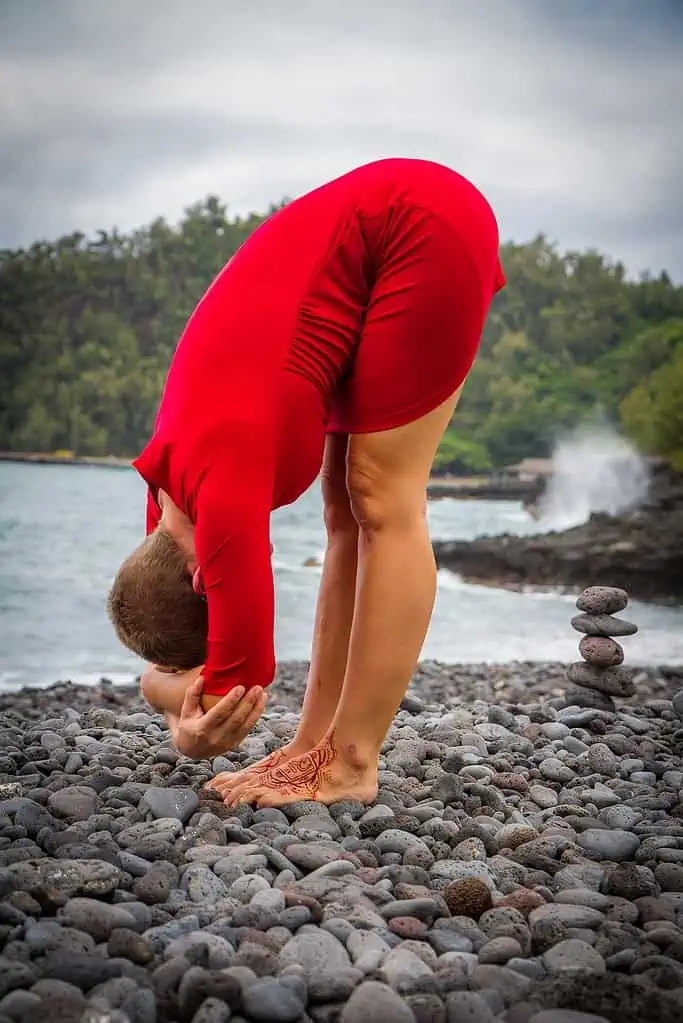
Muladhara Mudra
Muladhara mudra is a hand gesture to stimulate and balance the root chakra and connect you to the earth’s energy.
- Place your palms together in prayer position at your heart center
- Interlace the fingers and extend the middle fingers so their tips touch
- Variation: Flip this mudra upside down and lower your arms until the middle fingers point downward at your pelvic region
Root Chakra Stones and Crystals
Wearing the following gems and stones assists in healing and aligning root chakra energy. Alternatively, place them on your meditation altar.
- Garnet
- Ruby
- Hematite
- Smoky quartz
- Beryl
- Black tourmaline
- Tiger’s eye
- Bloodstone
Muladhara Chakra Sound Healing
Musical forms that target the root chakra include shamanic drumming, singing bowls and gongs. The root chakra frequency of 396 Hz is a low and smooth vibration that helps cultivate feelings of innocence, fearlessness, and belonging.
Chanting is an excellent grounding practice. Each of our seven energy centers is associated with a seed syllable. The root chakra’s sound is LAM (pronounced “lah-mmm”). Chant it four to eight times and notice how it activates and awakens your root energy center.
According to yoga philosophy, the ruler of Muladhara chakra is the part-elephant, part-human god, Ganesh. He represents both the soul and the physical realm. Connect with elephant spirit: mighty, giant, sensitive and wise.
Ganesh is the lord of new beginnings, abundance, and creativity, as well as the remover of obstacles and the patron saint of writers. A classic Sanskrit chant of devotion to Ganesh is “Om Gom Ganapate Namaha.”
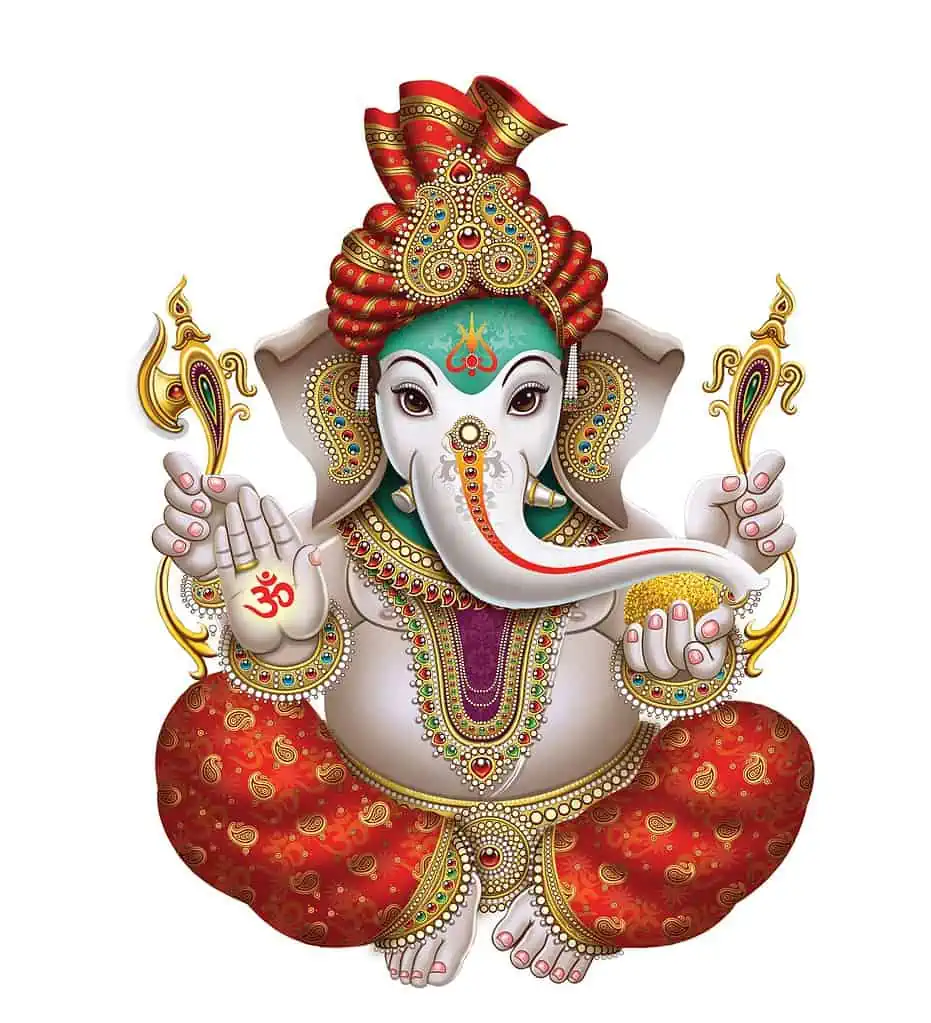
First Chakra FAQ
What is the root chakra responsible for?
The root chakra rules our core human issues: identity, safety, security, comfort, physical roots, basic needs (air, water, food, care) and our physical body.
How do I unblock my root chakra?
In addition to the practices outlined above, working with aromatherapy helps to unblock and balance your root chakra.
The first chakra corresponds to your sense of smell. Sitting comfortably with your spine elongated, bring your attention to the tip of your nose.
Rosewood, rosemary, cedar, sandalwood, ginger, thyme, basil, and sage are essential oils that activate muladhara energy. Burn these herbs as incense and use their essential oils in natural products.
Which emotions block the root chakra?
Emotions and feelings that block muladhara chakra include fear, anxiety disorders, fear, panic, worry, insecurity, rumination, depression, anger and rage.
How do I know if my root chakra is blocked?
If you feel overwhelmed, traumatized, paranoid or insecure, your root chakra is probably out of order. These unpleasant feelings often lead to harsh words or actions directed at yourself and others.
Physiological imbalances at the first chakra tend to manifest as pain, injury or disease in the colon, bladder, low back, legs, knees or feet.


